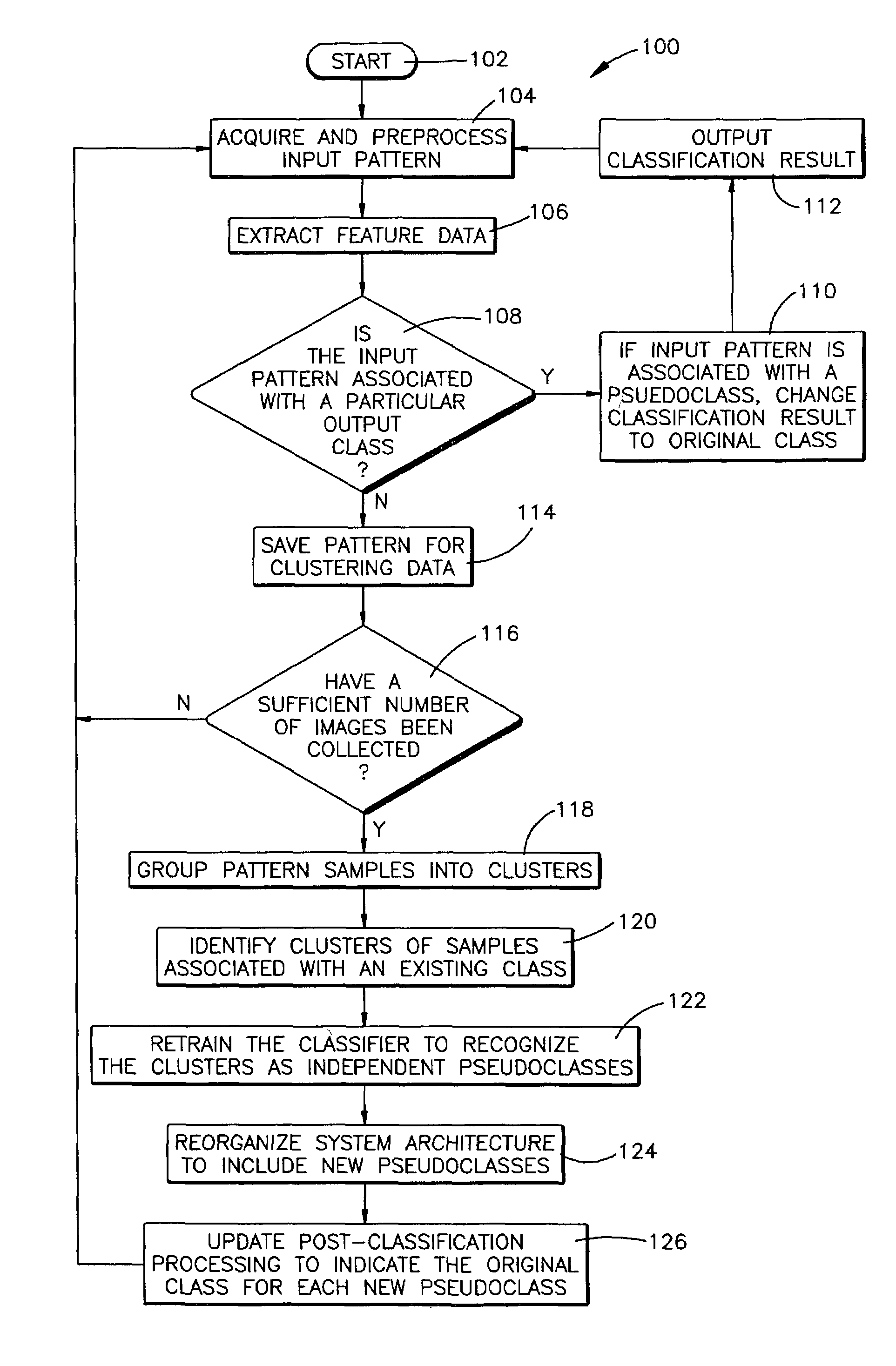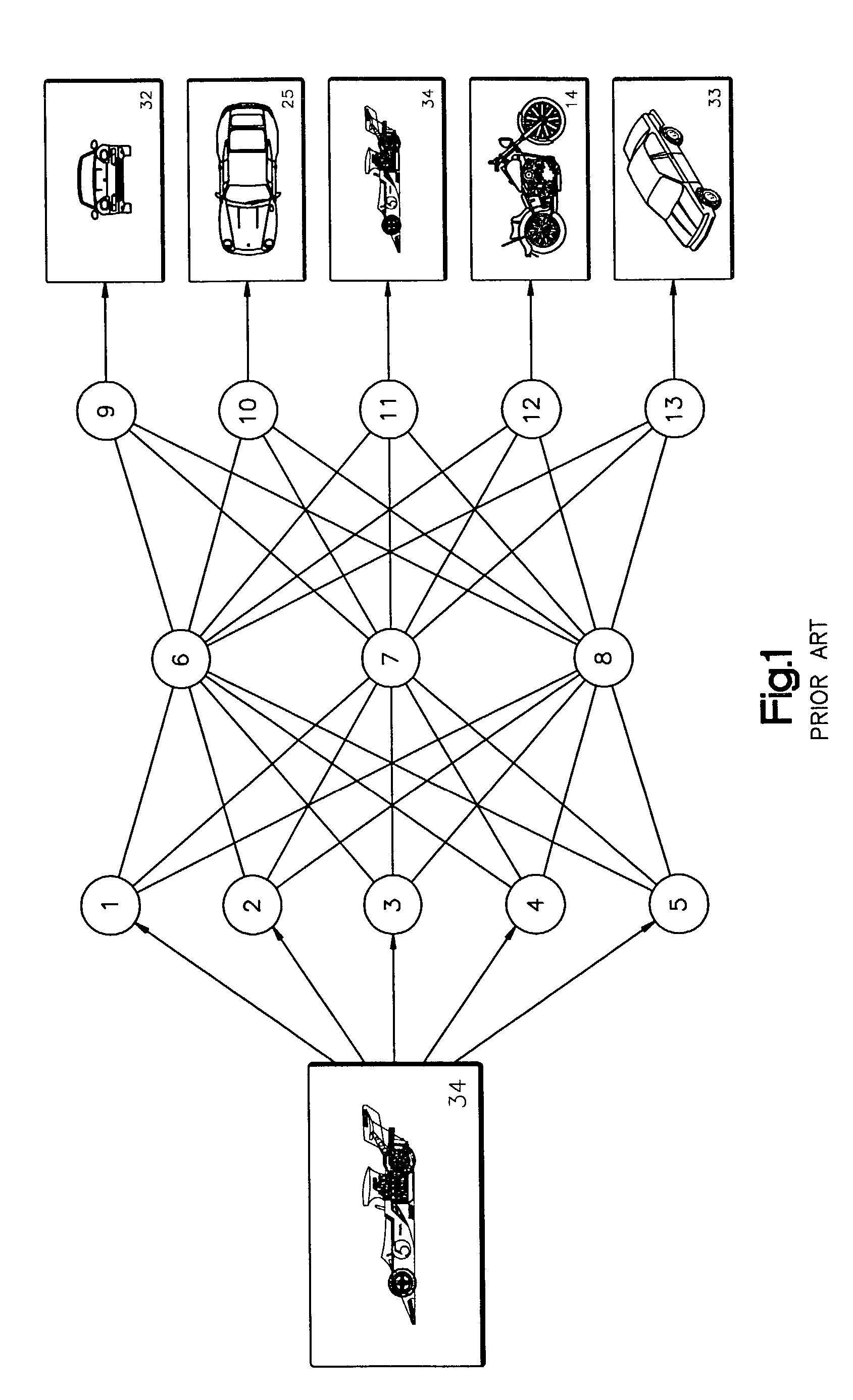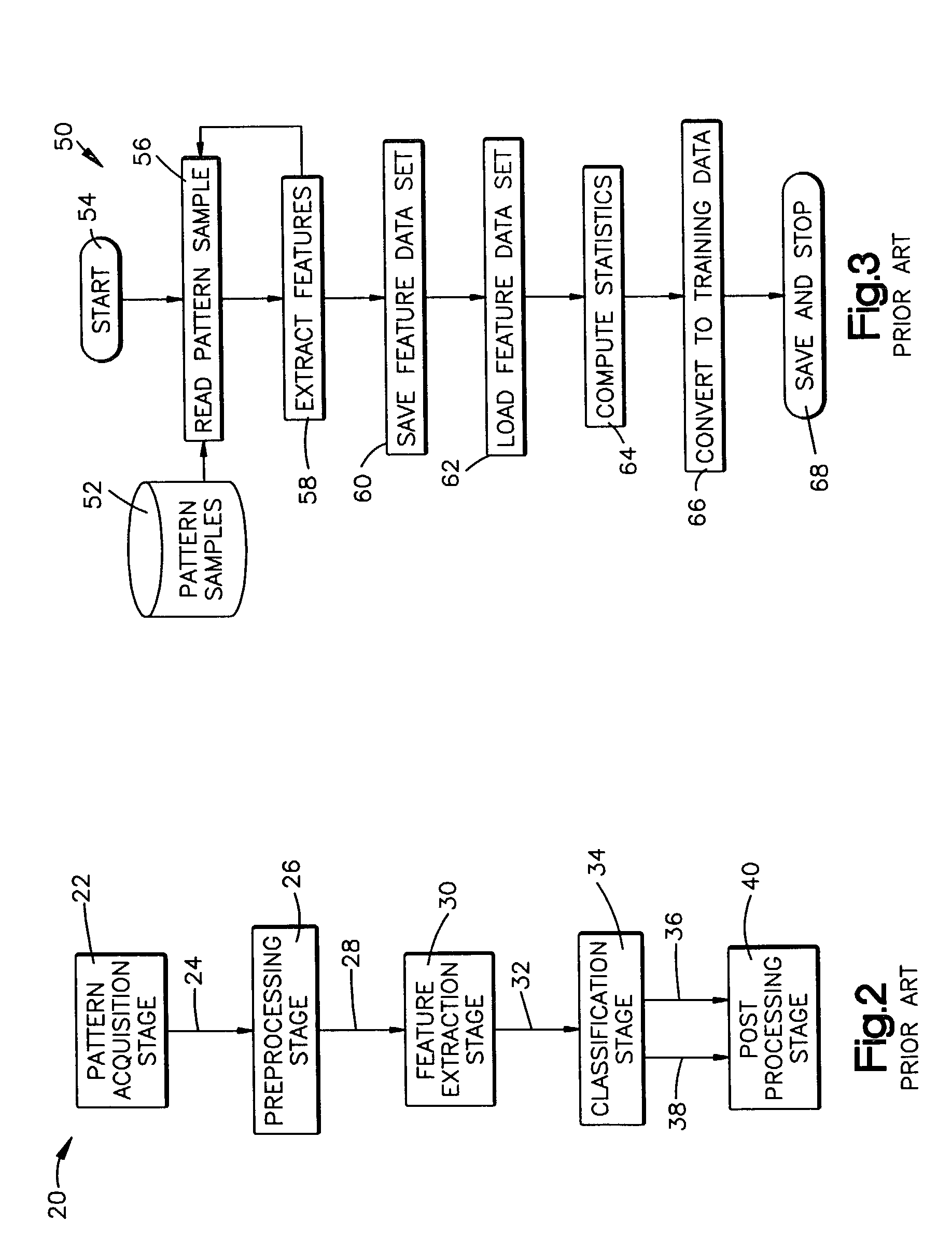Method and computer program product for identifying output classes with multi-modal dispersion in feature space and incorporating multi-modal structure into a pattern recognition system
a pattern recognition system and feature space technology, applied in the field of pattern recognition system multi-modal distribution and output class correction, can solve problems such as the inability to distinguish variant fonts using the original class parameters
- Summary
- Abstract
- Description
- Claims
- Application Information
AI Technical Summary
Problems solved by technology
Method used
Image
Examples
Embodiment Construction
[0019]In accordance with the present invention, a method for identifying output classes with multi-modal dispersion in feature space and incorporating multi-modal structure into a system architecture is described. The method may be applied to classifiers used in any traditional pattern recognition classifier task, including, for example, optical character recognition (OCR), speech translation, and image analysis in medical, military, and industrial applications.
[0020]It should be noted that a pattern recognition classifier to which the present invention may be applied will typically be implemented as a computer program, preferably a program simulating, at least in part, the functioning of a neural network. Accordingly, an understanding of the present invention will be facilitated by an understanding of the operation and structure of a neural network.
[0021]FIG. 1 illustrates a neural network that might be used in a pattern recognition task. The illustrated neural network is a three-l...
PUM
 Login to View More
Login to View More Abstract
Description
Claims
Application Information
 Login to View More
Login to View More - R&D
- Intellectual Property
- Life Sciences
- Materials
- Tech Scout
- Unparalleled Data Quality
- Higher Quality Content
- 60% Fewer Hallucinations
Browse by: Latest US Patents, China's latest patents, Technical Efficacy Thesaurus, Application Domain, Technology Topic, Popular Technical Reports.
© 2025 PatSnap. All rights reserved.Legal|Privacy policy|Modern Slavery Act Transparency Statement|Sitemap|About US| Contact US: help@patsnap.com



